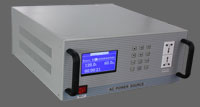Category

Power Conversion Common Practice
A common practice in the field of power conversion is to use switching power supplier to covert DC voltage of one level to an isolated DC voltage at a second level. A circuit to topology that is well suited for this purpose is the full bridge converter. One of the major disadvantages to switching power conversion is the losses associated with the switching element in the power converter, and a common approach is to utilize nearly zero voltage switching (ZVS) to minimize these losses.
In the recent past, switched mode power supplies that make use of resonant circuits for their operation, have emerged as an alternative to the more conventional types employing pulse width modulation (PWM). Among the important advantages claimed for this class of switched mode power supplies over the PWM type are the following.
In the recent past, switched mode power supplies that make use of resonant circuits for their operation, have emerged as an alternative to the more conventional types employing pulse width modulation (PWM). Among the important advantages claimed for this class of switched mode power supplies over the PWM type are the following.
- Circuit operation is possible at much higher frequencies, giving scope for reducing the size of reactive components.
- Because of smooth voltage and current waveforms, noise and interference are reduced.
- Stress on the switching devices is also reduced because of smooth voltage and current waveforms; zero voltage and zero current switching is possible.
- Parasitic circuit elements, such as transformer leakage inductance, can be taken into account as part of the circuit itself and so need not affect the circuit performance adversely.
Post a Comment:
You may also like:

